
Today’s topic: Studio Headphones.
Here are just a few of the fascinating nuggets in store for you inside this post:
- The Key Difference Between Closed-Back and Open-Back Studio Headphones (a MUST-KNOW)
- The Long-Time Industry Standard in Closed-Back Headphones That Is Shockingly Affordable – Can You Guess How Cheap?
- The Latest “Virtual Reality” Technology That Has Even The Most Experienced Sound Engineers Raving
- The Signature Headphones of Legendary Producer Quincy Jones (worked on Michael Jackson’s Thriller Album)
…plus a whole lot more juicy stuff that I know you’ll absolutely love.
Here’s what you’re about to discover:
- Closed Back vs Open Back Headphones: The Differences?
- The Industry Standard in Closed-Back Studio Headphones
- My Favorite Closed-Back Studio Headphones on the List
- A Closed-Back Model With Premium Sound Quality
- The All-New Game-Changing “Virtual Reality” Headphones
- A High-End Closed Back Model With Open Back Features
- Reference Quality Open Back Sound, at a Great Price
- The Modern Update to an Iconic Open Back Legend
- The Two Industry Standards in Open Back Studio Headphones
- The Grand Daddy of All Open Back Studio Headphones
First up…
Closed Back vs Open Back Headphones: The Differences?
Studio headphones come in 2 different styles:
- Closed-Back Headphones – which maximize sound isolation, at the expense of sound quality
- Open-Back Headphones – which do the opposite: maximizing sound quality at the expense of isolation
This is true simply because with headphones in general, as isolation goes up, sound quality generally goes down. So you have to prioritize.
When recording vocals or live instruments into a microphone, isolation is the priority, since you can’t have the sound from the headphones bleeding into the mic. In which case, a set of closed-back headphones would be ideal.
On the other hand, if you’re mixing, or recording an instrument that doesn’t require a microphone, such as a keyboard or electronic drum kit…
Isolation no longer matters, but a pair of open-back headphones could significantly improve the sound.
So in this post we’ll cover both varieties: Closed-back first, open-back second.
Here we go. First up…
The Industry Standard in Closed-Back Studio Headphones
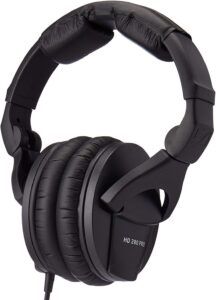
No matter who you are, chances are high that you’ve seen the Sennheiser HD280 Pro before, countless times.
Because they are far and away the industry standard in music, podcasting and voiceovers.
It’s true…they aren’t particularly glamorous, and there are no special features to brag about.
Quite honestly, they don’t even have the absolute greatest sound.
But serve their purpose well, they’re extremely durable, and they’ve been a staple in recording studios for many decades now.
And despite their cheap price point, studios that can afford whatever they want will still use them over most expensive alternatives.
Check it out:
- Sennheiser HD280 Pro – (Amazon/Sweetwater/Thomann)
The closest alternative to the HD280 is the legendary:
- Sony MDR-7506 – (Amazon/Sweetwater/Thomann)
Some users give them a slight edge OVERALL…myself being one of them.
Having used them both, I find the MDR-7506 marginally better in both comfort and sound quality. After sifting through the reviews, I found others who agreed as well.
So but ultimately it’s up to you. Both are great choices.
Now….for 90% of folks reading this, I recommend stopping here and choosing one of the first two options on the list.
But if you still want more, let’s continue.
Up next…
My Favorite Closed-Back Studio Headphones on the List
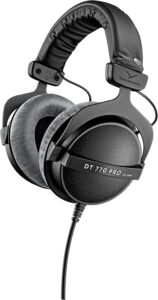
Moving up a bit in price, we have the Beyerdynamic DT770 Pro…which has some significant upgrades in overall quality.
In terms of comfort, sound, and style, I’d say these headphones easily blow the previous 3 out of the water.
In terms of sound isolation, and durability…they’re about the same.
They’re not nearly as impressive as the closed-back headphones we’re about to cover next, but overall I’d say the DT770 offers the perfect compromise between luxury features, and affordable price.
That is why they are my #1 favorite headphones on this list.
- Beyerdynamic DT770 Pro – (Amazon/Sweetwater/Thomann)
For a different version of the same headphones, I’d also recommend:
- Beyerdynamic DT770M – (Amazon/Sweetwater/Thomann)
These are intended specifically for drummers, and offer 35dB of noise attenuation, which is the highest figure of any headphones I found.
Up next…
A Closed-Back Model With Premium Sound Quality
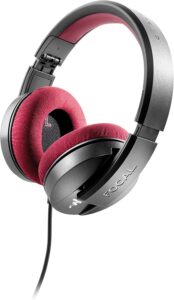
With closed-back headphones, sound quality always comes second to isolation.
Traditionally this means that the sound quality is mediocre at best. But not always.
Because when the price is right, you can actually have a decent level of both.
And with the Focal Listen Professionals, that’s exactly what you get:
- Everything you’d expect from a pair of closed-back headphones…
- With sound quality rivaling many open-back models
One clever feature of these headphones is the memory foam padding, which comfortably molds your head, sealing up any open gaps.
That way…the inside noises stay IN, and the outside noises stay OUT.
Check them out. I suspect you’ll be impressed.
- Focal Listen Professional – (Amazon/Sweetwater/Thomann)
Up next…
The All-New Game-Changing “Virtual Reality” Headphones
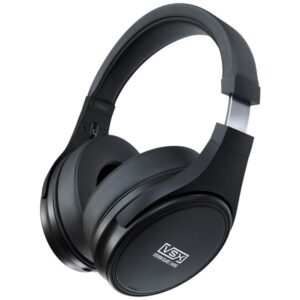
Developed by the legendary Steven Slate (whom you may already know from his virtual instrument drums)…
This all-new one-of-a-kind technology appears to be redefining the limits of headphone mixing as we’ve known them.
Traditionally, mixing on headphones carries so many challenges, it’s generally not recommended…period.
However, with its new “virtual reality” tech, the Steven Slate VSX emulates almost any mixing/listening environment imaginable, including studios, clubs, etc.
It also simulates sound sources as well, including famous monitors, headphones – even car stereos, so you can check your mix in almost any context imaginable.
While traditionalists might be skeptical of such “nonsense” – users and sound engineers all seem fully convinced that these headphones are every bit as spectacular as they claim.
So for the average home studio – with a “less-than-ideal” mixing environment – they could be the perfect solution.
- Steven Slate VSX Essentials (limited environments) – (Amazon/Sweetwater/Thomann)
- Steven Slate VSX Platinum (all environments) – (Sweetwater/Thomann)
Next up…
A High-End Closed Back Model With Open Back Features
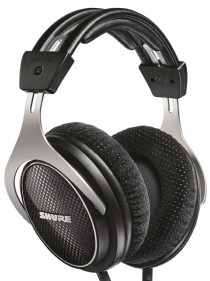
Taking the high-end closed-back design to an entirely new level…
You might assume at first glance that the Shure SRH-1540 are open-back.
Because from a design standpoint…they do resemble many high-end open-back models.
Somehow, you can tell just by looking at them how ridiculously comfortable they are.
In terms of sound though, they’re perhaps the closest you could ever come to reference quality sound in a pair of closed-back headphones.
This is the overwhelming consensus from reviews, many of which were written by audiophile geeks. And when it comes to high-end sound, those guys REALLY know their stuff.
So if the best of the best is what you want, you won’t do better than these:
- Shure SRH-1540 – (Amazon/Sweetwater/Thomann)
Now that we’ve covered all the best closed-back studio headphones, let’s move on to the open-back models.
Up next…
Reference Quality Open Back Sound, at a Great Price
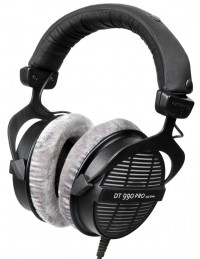
Traditionally, open-back headphones are known to be the most expensive of ANY headphone type…period.
So finding an affordable pair can be tricky if you don’t have a big budget.
So if affordable is what you want, there’s no better option than the Beyerdynamic DT990 Pro.
For a mid-range model, they have everything you could ask for:
- an exceptionally wide frequency range (5Hz-35kHz)
- a strong bass presence
- a very comfortable fit
Having used them before, I can personally vouch for their comfort.
So if you’re looking for a great introduction into the world of open-back studio headphones, get these:
- Beyerdynamic DT990 Pro – (Amazon/Sweetwater/Thomann)
Up next…
The Modern Update to an Iconic Open Back Legend
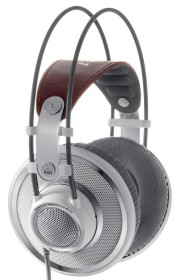
Back in the day…the flagship headphones of the AKG line….the old AKG K1000 …
Was commonly known in audiophile circles as the best studio headphones in the World.
Today…the modern update to this classic, the AKG K701, inherits many of the same remarkable qualities…with some updated technology as well.
For instance, they now feature AKG’s flat-wire coil technology, which compared to the K1000…
- Provides a better low-end sound, and…
- Allows them to be driven by less-powerful amplifiers.
You might also be interested to know…legendary producer, Quincy Jones, the man with more Grammys than anyone alive…created a special edition of these headphones: the AKG Q701.
According to him, they have the best sound of any pair of headphones he’s ever heard. And if it’s good enough for Quincy…it’s good enough for us.
- AKG K701 – (Amazon/Sweetwater/Thomann)
Up next…
The Two Industry Standards in Open Back Studio Headphones
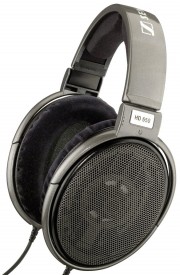
If there are two pairs of headphones in the World synonymous with high-end studio sound, it’s the:
- Sennheiser HD 650
- Shure SRH1840
A long-time favorite in both audiophile, and pro audio circles…
These headphones have perhaps more great reviews than any models on this list.
And that’s ESPECIALLY impressive considering that they’re by no means cheap.
Having used both, my favorite common feature is the deep padding of the ear cups, which essentially allow the headphones to float around your ears…unlike most headphones which smash up against them.
As the standards among audiophiles for years, there’s really no better choice for ultra high-end listening, or studio-quality reference sound.
Here are the links:
- Shure SRH1840 – (Amazon/Sweetwater)
- Sennheiser HD 650 – (Amazon/Sweetwater/Thomann)
And finally…
The Grand Daddy of All Open Back Studio Headphones
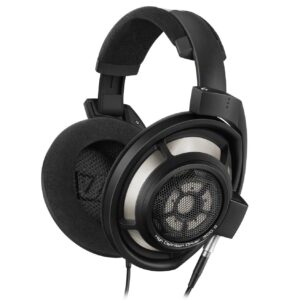
In Sennheiser‘s legendary line of open-back HD headphones, they’ve had many updates over the years:
- First there was the classic HD600…
- Then, the improved HD650…
- Later came the mostly unsuccessful HD700…
- And finally, the critically acclaimed flagship HD800
At first launch, the HD800 was a huge success. Its popularity grew so quickly it actually surpassed that of the classic HD650.
Despite its ridiculous price tag, it still had a shocking number of stellar reviews from satisfied customers.
Apart from that, it had a few technical specs that set it WAY apart from its competitors, namely:
- Widest frequency available – with the ability to reproduce frequencies between 5Hz and 51 kHz
- Extremely low THD – Total Harmonic Distortion is essentially the measure of how much of the signal output is distorted. The HD800 had the lowest of ALL headphones.
- Very high impedance – which is not necessarily a good thing in itself, but it does force you to use a good headphone amp, to drive your headphones even more precisely.
Today, the most current version of this series is the even more improved HD800s.
And of those reviewers who upgraded from the HD600 or HD650…the overwhelming consensus is…the HD800S blows them BOTH out of the water.
So if you want the absolute best…this is it:
- Sennheiser HD800S – (Amazon/Sweetwater)
Closed back version of these headphones:
- Sennheiser HD820 – (Amazon/Sweetwater)
Looking for something cheaper? Here’s a better post for you.
By the way, if you found this post useful, I highly recommend joining our free Home Recording Secrets email newsletter where you’ll discover….
- How to Get Your First Studio Up and Running in a Single Weekend
- How to Avoid Wasting Thousands of Dollars on Unnecessary Pointless Purchases
- How to Get a “Million Dollar” Pro Studio Sound in a “Thousand Dollar” Home Studio
- PLUS… All Sorts of Other Amazing Insider Secrets Revealed
And it’s totally FREE! Click here and Enter Your Email to Sign Up.